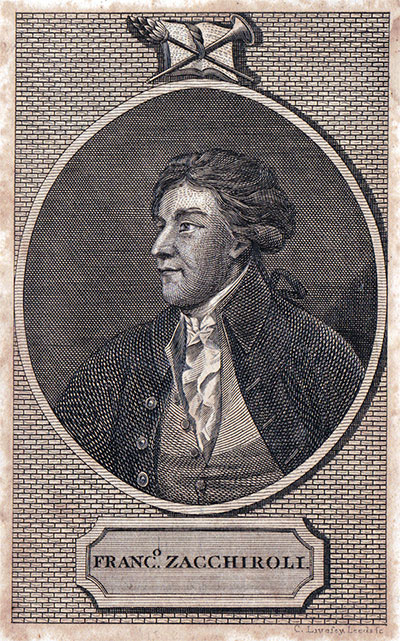Abstract
Francesco Zacchiroli (1750-1826), nato a Castelguelfo, studiò Teologia a Lugo e poi Legge a Bologna. Per breve tempo insegnò Diritto in quella Università ma poi si dedicò agli studi letterari. Trasferitosi a Roma, fu da papa Clemente XIV nominato segretario dell’Inquisitore di Malta. Passò quindi a Napoli e successivamente a Firenze, trovando protezione sotto il granduca Pietro Leopoldo, dove scrisse e pubblicò (in francese) Descrizione della reale Galleria di Firenze. Visse poi a Milano, dove conobbe Cesare Beccaria, i fratelli Verri e Giuseppe Parini, a Venezia e a Roma. Infine dopo il matrimonio si trasferì a Imola. Aderì alla Repubblica Cispadana e alla Cisalpina e durante il Regno d’Italia fu viceprefetto del dipartimento del Tagliamento a Conegliano dal 1807 al 1813. Caduto Napoleone, si ritirò a Bologna dove morì. Pubblicò diverse opere sia in versi che in prosa, occupandosi di vari argomenti, tradusse opere dal francese, fu promotore di nuove riviste e in relazione con Vincenzo Monti, con Vittorio Alfieri, che scrisse contro di lui un epigramma, e con Francesco Albergati Capacelli, la cui corrispondenza fu data alle stampe con il titolo di Lettere capricciose.
Francesco Zacchiroli (1750-1826) was born in Castelguelfo and studied theology in Lugo, and law in Bologna, where he also lectured in the latter subject for a brief period before devoting himself to literary studies. Upon moving to Rome he was appointed secretary to the Inquisitor of Malta by Pope Clemente XIV. He then moved to Naples and subsequently to Florence, finding protection under the Grand Duke Pietro Leopoldo, where he wrote and published his Description of the Royal Gallery of Florence (in French). He later lived in Milan, where he met Cesare Beccaria as well as the Verri brothers and Giuseppe Parini, in Venice and in Rome. Finally after marrying, he settled in Imola. He adhered to the Republic of Cispadana and Cisalpina and under the Kingdom of Italy served as vice prefect of the Tagliamento region in Conegliano from 1807 to 1813. After the fall of Napoleon he retired to Bologna where he died. He published several works on various topics both in verse and prose, translated works from French, was a promoter of new magazines and associated with Vincenzo Monti, with Vittorio Alfieri, who wrote an epigram against him, and with Francesco Albergati Capacelli, whose correspondence was published under the title Lettere capricciose.
Condividi

